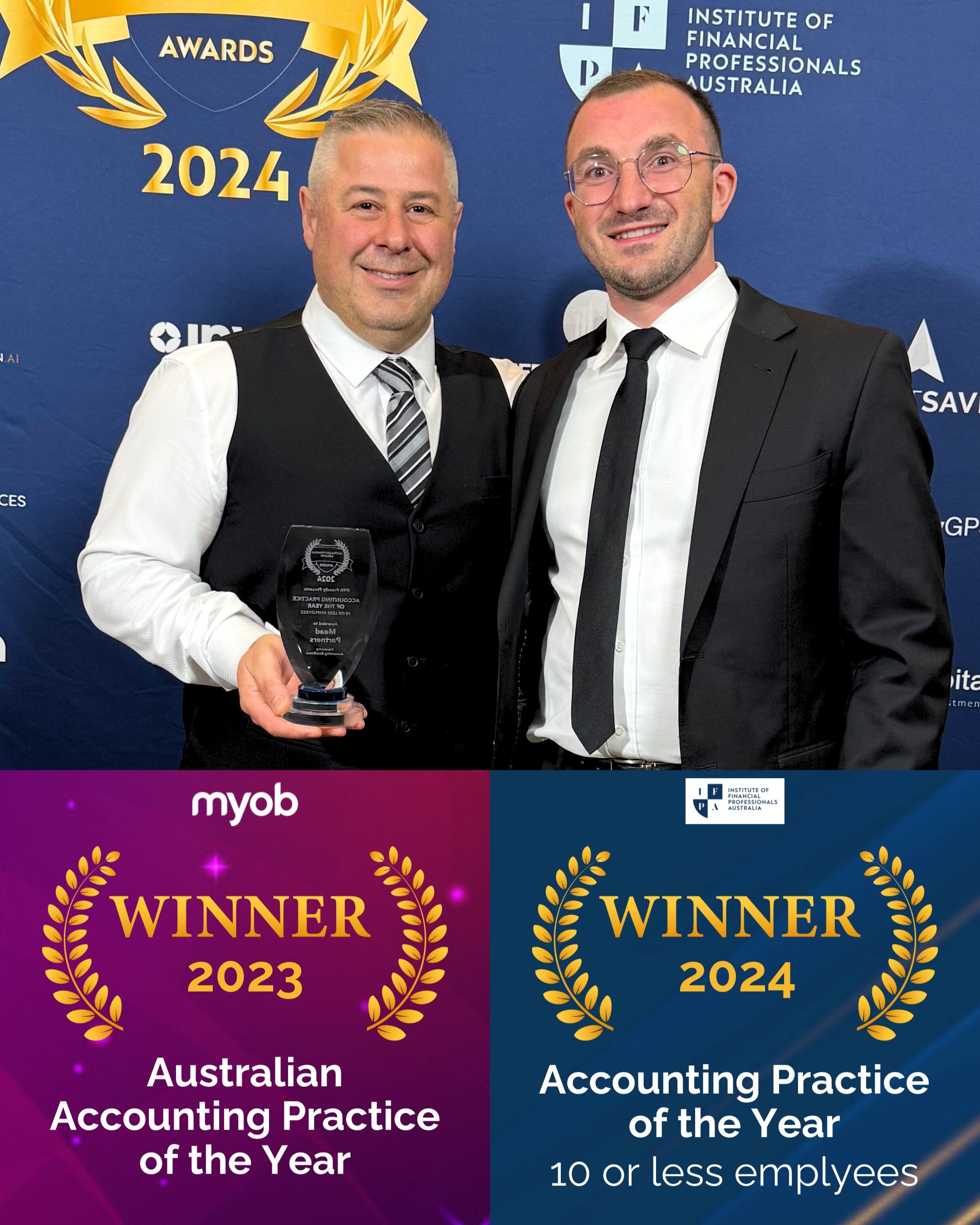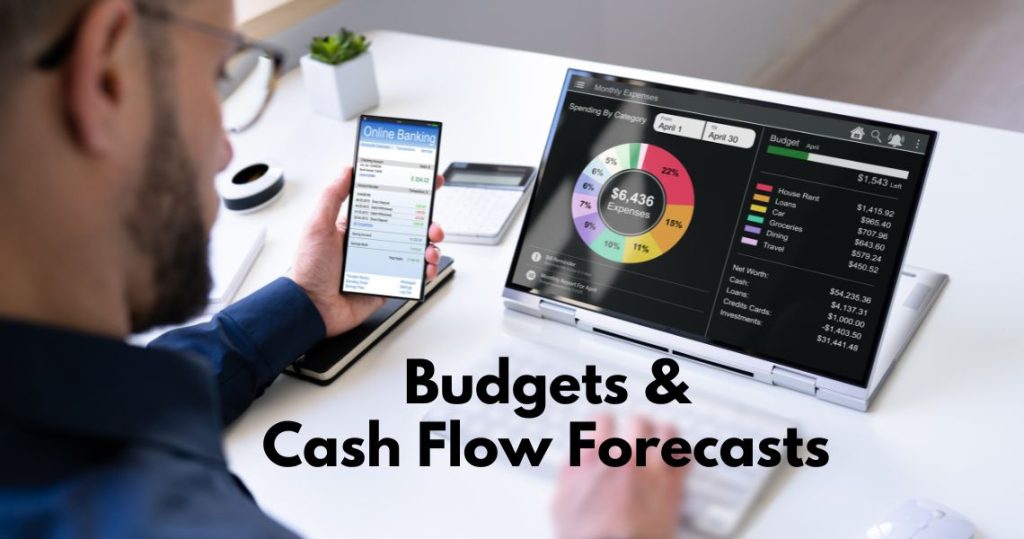
Book a Free Consultation!
✅Builders CFO Program
✅Business Improvement Program
✅Taxation Advice
.

Want to learn this through audio? Click to play! 🎧
⬇️⬇️⬇️
As a business owner in Australia, staying on top of your business’s financial health is paramount. Two crucial components that can significantly impact your bottom line are budgets and cash flow forecasts. While these terms may seem interchangeable, they serve distinct purposes and play vital roles in ensuring your venture’s prosperity. In this comprehensive guide, we’ll unravel the differences between budget preparation and cash flow forecasting, empowering you to make informed decisions for your small business’s growth.
What is Budget Preparation?
Budget preparation is like reflecting on what’s already happened. It involves analysing your business’s past expenditures and revenue streams. By thoroughly examining the financial data from the previous fiscal year, you can gain valuable insights into your spending patterns, cost structures, and profitability.
The primary objective of budget preparation is to establish a realistic estimate of the expenses your business is likely to incur during the upcoming financial year. This process enables you to identify areas where costs can be optimised, investments can be made, or resources can be reallocated more efficiently.
Why is Budget Preparation Crucial?
Effective budget preparation is a cornerstone of sound financial management for several reasons:
- Cost Control: By meticulously tracking and projecting expenses, you can implement cost-cutting measures or identify areas where spending needs to be curtailed.
- Resource Allocation: A well-crafted budget allows you to allocate resources strategically, ensuring that critical business operations and growth initiatives receive adequate funding.
- Tax Planning: Accurate budget preparation aids in tax planning by providing a clear picture of your business’s income and deductible expenses, helping you minimise your tax liabilities.
- Performance Evaluation: By comparing actual results to budgeted figures, you can assess your business’s performance, identify areas for improvement, and make data-driven decisions.
Steps in Budget Preparation
While the specifics may vary depending on your industry and business model, the general steps involved in budget preparation are as follows:
- Review Historical Data: Analyse your business’s financial statements, invoices, receipts, and other relevant documents from the previous financial year to understand your spending patterns and revenue streams.
- Identify Fixed and Variable Costs: Categorise your expenses into fixed costs (rent, insurance, salaries) and variable costs (utilities, raw materials, marketing).
- Forecast Revenue: Estimate your expected revenue for the upcoming year based on factors such as market trends, sales projections, and pricing strategies.
- Allocate Resources: Determine how much funding should be allocated to different areas of your business, such as operations, marketing, research and development, and capital investments.
- Monitor and Adjust: Regularly review your budget throughout the year and make adjustments as necessary to account for unforeseen circumstances or changes in your business environment.
What is Cash Flow Forecasting?
Cash flow forecasting, on the other hand, is a forward-looking process that focuses on predicting the timing and amount of cash inflows and outflows for your business over a specific period, typically a year. Unlike budget preparation, which primarily concentrates on expenses, cash flow forecasting takes into account all sources of cash receipts, including sales revenue, loans, investments, and other income streams.
The primary objective of cash flow forecasting is to ensure that your business has sufficient liquidity to meet its financial obligations and operational needs as they arise. By anticipating cash shortages or surpluses, you can make informed decisions about managing your working capital, securing financing, or investing excess funds.
Why is Cash Flow Forecasting Crucial?
Effective cash flow forecasting is essential for the long-term viability of your small business’s cash management for several reasons:
- Liquidity Management: By accurately predicting cash inflows and outflows, you can ensure that your business has enough cash on hand to meet its financial obligations, such as paying suppliers, employees, and creditors.
- Debt Management: Cash flow forecasting helps you identify periods when your business may need to secure additional financing or restructure existing debt, allowing you to proactively manage your borrowing needs.
- Investment Opportunities: If your cash flow forecast indicates a surplus, you can explore investment opportunities that may generate additional revenue or enhance your business’s growth.
- Strategic Planning: By understanding your cash flow patterns, you can make informed decisions about expansion plans, new product launches, or other strategic initiatives that require significant cash outlays.
Steps in Cash Flow Forecasting
The process of cash flow forecasting typically involves the following steps:
- Identify Cash Inflows: Determine all sources of cash receipts, including sales revenue, loans, investments, grants, and other income streams. It’s essential to review your cash flow statement to understand how these inflows contribute to your business’s overall financial health.
- Estimate Cash Outflows: List all expected cash outflows, such as operating expenses (rent, utilities, salaries), loan repayments, tax payments, and capital expenditures.
- Consider Timing: Account for the timing of cash inflows and outflows, as mismatches can lead to temporary cash shortages or surpluses.
- Analyse Historical Data: Review your business’s past cash flow patterns to identify seasonal trends or recurring cash flow cycles.
- Monitor and Adjust: Regularly update your cash flow forecast to reflect actual results and make adjustments based on changes in your business environment or unexpected events.
Integrating Budgets and Cash Flow Forecasts
While budget preparation and cash flow forecasting serve distinct purposes, they are closely intertwined and should be used in tandem to achieve optimal financial management for your small business. Here’s how these two processes can be integrated:
- Initial Budget Preparation: Start by creating a comprehensive budget based on your business’s historical data and projected expenses for the upcoming fiscal year.
- Cash Flow Forecasting: Use the information from your budget, along with anticipated revenue streams and other cash inflows, to develop a detailed cash flow forecast.
- Iterative Refinement: After completing your initial cash flow forecast, you may need to revisit and adjust your budget to account for any potential cash flow shortages or surpluses.
- Ongoing Monitoring: Throughout the year, regularly monitor your actual results against your budget and cash flow forecast, making adjustments as necessary to ensure accurate financial planning.
By integrating budget preparation and cash flow forecasting, you can gain a comprehensive understanding of your business’s financial health, enabling you to make informed decisions about resource allocation, debt management, and strategic planning.
Leveraging Professional Expertise
While budget preparation and cash flow forecasting are essential for the success of your small business, these processes can be complex and time-consuming, especially if you lack financial expertise. Fortunately, there are professional services available to assist you in navigating these critical financial tasks.
At Mead Partners, we’re specialists in helping your business plan for the new financial year, tailored to your small business, providing expert guidance and support in areas such as budget preparation, cash flow forecasting, tax planning, and financial analysis.
We have the expertise and the tools to make this easy for you. We can provide detailed three-way forecasts (Profit and Loss, Cash Flow, and Balance sheet), in a straightforward and understandable report, which you can then use to monitor the performance of your business.




Conclusion
In the dynamic landscape of small business ownership, mastering the art of budget preparation and cash flow forecasting is essential for long-term success. While these processes serve distinct purposes, they are inextricably linked and should be integrated to achieve optimal financial management.
By understanding the nuances of budget preparation and cash flow forecasting, you can make informed decisions about resource allocation, cost control, debt management, and strategic planning. Additionally, leveraging professional expertise can provide invaluable guidance and support, ensuring that your budgets and cash flow forecasts are accurate and aligned with your business goals.

Send To Someone